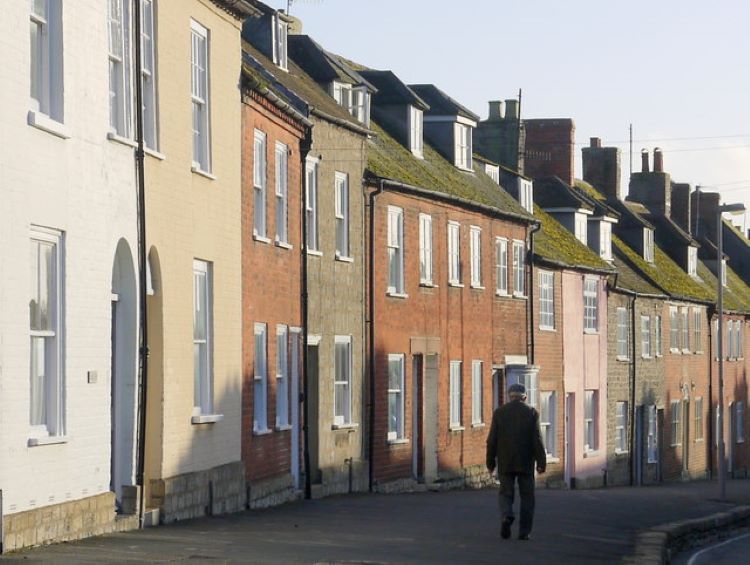File:DPC.Houses.jpg
cc-by-sa/2.0 - Nigel Mykura, Geograph, source: geograph.org.uk/p/4304941 Not for reuse. These terraced houses are on the east side of South St Opposite St Mary's church. Several of the houses are made from brick with the lower courses of the wall made of Bothenhampton Stone. This is a local stone that is impervious to water and acts as a damp proof barrier. The Bothenhampton stone was once known as Baunton stone. The houses would originally have had long narrow rear gardens as most of them were built for out-workers of Bridport's rope and twine industry.
File history
Click on a date/time to view the file as it appeared at that time.
| Date/Time | Thumbnail | Dimensions | User | Comment | |
|---|---|---|---|---|---|
| current | 16:29, 14 December 2021 |  | 750 × 565 (82 KB) | Editor (Talk | contribs) | (cc-by-sa/2.0 - © Nigel Mykura, Geograph, source: geograph.org.uk/p/4304941 Not for reuse. These terraced houses are on the east side of South St Opposite St Mary's church. Several of the houses are made from brick with the lower courses of the wall made ) |
- Edit this file using an external application (See the setup instructions for more information)
File usage
The following 2 pages link to this file:
About the wiki
Anyone is welcome to use and contribute to the wiki in different ways.
[edit] Engaging with the wiki
You can:
- Contribute to existing articles
- Create articles
- Share articles through social media and other channels
- Contact the CIRCuIT project to let us know what you think and how we can improve
[edit] Add your own content
To contribute to or create an article, you can follow these steps:
- Register as a user
- Read through the editorial policy and guidance on writing and contributing to articles
- See the detailed help page on tips on writing wiki articles
- Try editing a test article
- If editing an article, select 'Edit this article' underneath the article title
- If creating a new article, select 'Create an article'. In the 'Select categories' area, expand the 'Industry context' list and tag 'Circular economy' to add your article to this wiki
[edit] Who is this wiki for?
The articles contain information on implementing circular economy approaches in construction that could be relevant to:
- Architects
- Construction contractors
- Designers
- Developers, owners, investors
- Engineers
- Landowners
- Manufacturers and supplier
- Universities and research
- Urban planners
[edit] About CIRCuIT
The Circular Economy wiki is supported by the Circular Construction in Regenerative Cities (CIRCuIT) project, which is funded by the European Union's Horizon 2020 research and innovation programme. CIRCuIT is a collaborative project involving 31 ambitious partners across the entire built environment chain in Copenhagen, Hamburg, Helsinki Region and Greater London. Through a series of demonstrations, case studies, events and dissemination activities, the project will showcase how circular construction practices can be scaled and replicated across Europe to enable sustainable building in cities and the transition to a circular economy on a wider scale.







